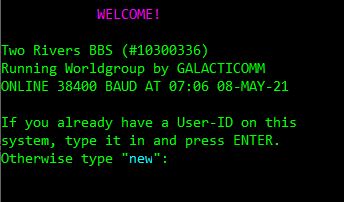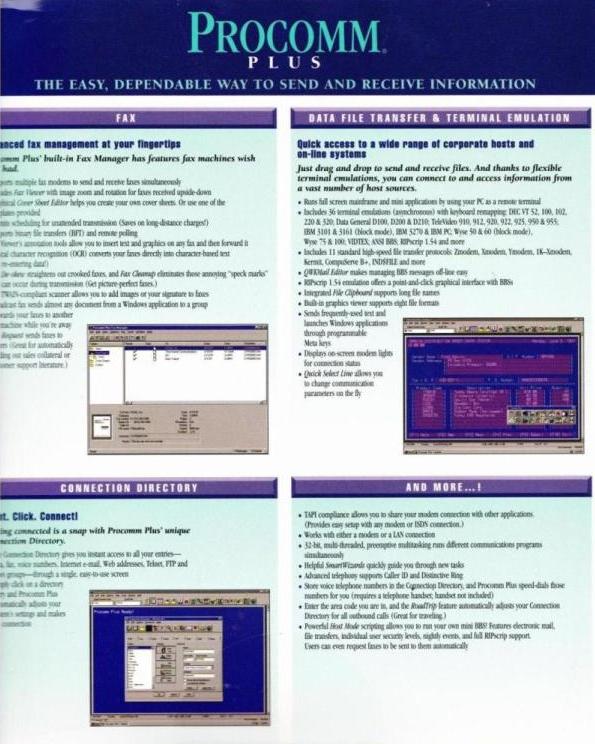
#Procomm plus terminal download download
Exactly how long? The general rules of thumb to quickly estimate how long your download would take at 2400bps were that 1KB took about five seconds 100KB took about eight minutes and 1MB took about an hour and a half.įor someone who's never used a BBS-or for someone who's never had anything other than a broadband connection-it's hard to really explain just how different that is from today. At 1200bps, fast readers could find themselves waiting on the remote computer at 300bps (rare but not unheard of in the early 90s), fast typists could at times out-type their connection speed.įor text, 2400bps was perfectly adequate, but downloading binary files-images, large text files, compressed binary files, whole applications spread across floppy-sized disk images-took a long time. This was slow enough that you could actually see the screen fill with text, line by line.

And everyone knows how "slow" 56K was.Īt 2400bps and typical encoding, a single character took 10 bits of transmission (a start bit, a stop bit, and eight bits for the character itself, though other encodings were also used), and so the character rate maxed out at 240 characters per second. To put 2400bps in some perspective, that's 2.4Kbps, meaning that the last generation of 56Kbps modems were about 23x faster than poor old 2400bps. We are accustomed these days to rich webpages and files delivered to us over always-on multi-megabit-per-second Internet connections, but that was the stuff of universities and governments back then.

It's a little bit pedantic to insist on saying "bps" instead of "baud," but it's also correct.īut before that, we need to take a moment and put all of this modem stuff in perspective because you can't understand what it was like back then without understanding exactly how slow 2400bps is. Starting with the ITU-T V.22 specification for 1200bps communication, modems could encode multiple bits in a single symbol change, and "bps" and "baud" diverged forever.Ģ400bps, the speed I talk about for most of this piece, actually used a symbol rate of 600 cycles per second-or "600 baud." However, modems speaking V.22bis protocol for 2400bps communication used quadrature amplitude modulation to actually encode four bits into every cycle-so 600 cycles per second with four bits per cycle meant 2400 bits per second. However, "baud" more correctly refers to how often the modem signal flips from a 1 to 0 or back (the symbol rate), while "bits per second" is a measure of the actual data being carried. baudColloquially, "bps" and "baud" are often used interchangeably-you'd see people referring to their connection speed as either "1200 baud" or "1200bps," for example, and both were intended to mean the same thing.


 0 kommentar(er)
0 kommentar(er)
